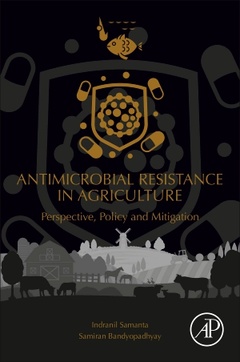Description
Antimicrobial Resistance in Agriculture
Perspective, Policy and Mitigation
Authors: Samanta Indranil, Bandyopadhyay Samiran
Language: English
Subjects for Antimicrobial Resistance in Agriculture:
121.37 €
In Print (Delivery period: 14 days).
Add to cart392 p. · 21.4x27.6 cm · Paperback
Description
/li>Contents
/li>Readership
/li>Biography
/li>Comment
/li>
Antimicrobial Resistance in Agriculture: Perspective, Policy and Mitigation is a valuable industrial resource that addresses complex, multi-factorial topics regarding farm, wild, companion animals, fish, and how the environment plays an important role in amplification and transmission of resistant bugs into the human food chain. Information of phenotypical and genotypical properties of each bacterial genus associated with antimicrobial resistance, transmission dynamics from different reservoirs (food animals, poultry, fishes) and control measures with alternative therapy, such as phytobiotics and nanomaterials are provided. Researchers, scientists and practitioners will find this an essential resource on the judicial use of antibiotics in animals and humans.
Research professionals engaged in Food Science/zoonotic infection / Veterinary Microbiology/ Veterinary Medicine / Medical Microbiology/ Industrial Microbiology associated work
Post graduate students and Ph.D. scholars of Food Science Veterinary Microbiology, Veterinary Medicine, Medical Microbiology,
Veterinary or Medical practitioners; Policy makers
Dr. Samiran Bandyopadhyay is a Senior Scientist at ICAR-IVRI. His research focuses on emergence of antimicrobial resistance in livestock from eastern and north-eastern India. Recent interests include etiopathogenesis of diarrheal and abortive illnesses of yaks in the Himalayan ranges
- Explores all the genera of livestock and fish originated pathogenic bacteria associated with antimicrobial resistance
- Presents cutting-edge research on epigenetics, nanotechnology and intervention technologies
- Discusses transmission dynamics of resistance gene pools from different reservoirs, including food animals, poultry, fishes and the environment




